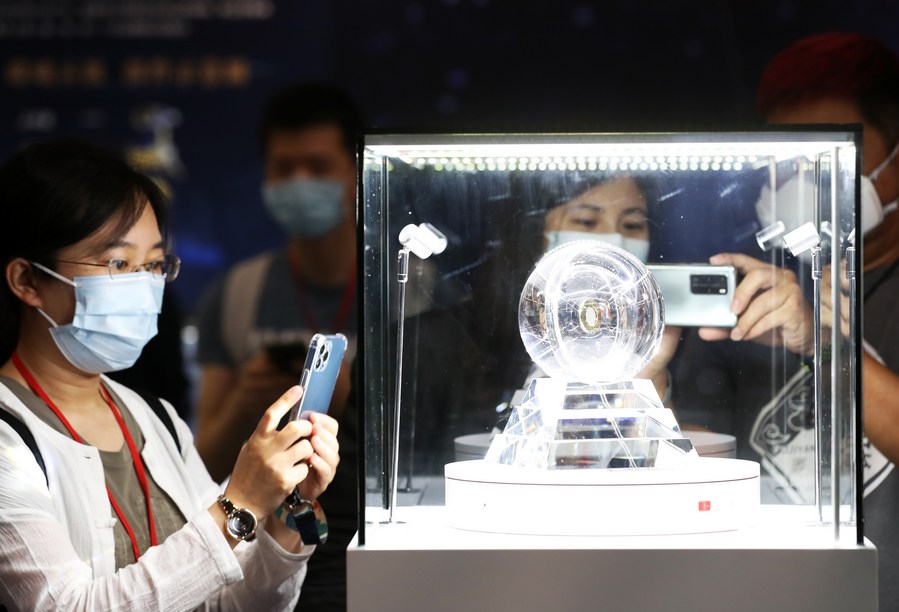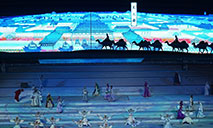Chinese scientists conduct painstaking high-tech research on 0.15-gram motes of moondust
A mere 0.15 grams of lunar soil specimens were attritioned during scientific studies conducted by researchers from the Institute of Geology and Geophysics (IGG) under the Chinese Academy of Sciences (CAS). Such a low attrition rate for the samples was made possible by way of technicians' superb skills and a globally advanced experimental platform.

Visitors take photos of an exhibit at the Hong Kong Convention and Exhibition Center in south China's Hong Kong, June 25, 2021. Lunar soil brought back by China's moon mission was on display in Hong Kong on June 26, 2021. (Xinhua/Li Gang)
The latest achievements in research on lunar soil specimens returned by the Chang'e 5 lunar mission were recently released by the CAS. "All the research was done in our institute, which fully illustrates the scientific research strength and innovation capabilities of China," Li Xianhua, a researcher with the IGG said beaming with pride.
The lunar soil sample returned by the Chang'e 5 lunar mission and obtained by the IGG, which was 5 grams in total, looked like a handful of dust. "It would be blown away if you give a puff like this," Li explained.
Every grain of the lunar soil specimen is precious, but each can be studied with a different perspective and for different scientific purposes. The question, though, is how to dig out the "most representative" specimens that can contribute the most to productive scientific achievements.
Wu Fuyuan, director of the IGG, revealed their "secret weapon"— namely, Ma Hongxia, a technician at the IGG whose deft hands can quickly manipulate each dust-sized specimen.
"Such a technician is a valuable treasure for our institute. Many research institutions at home and abroad have to 'borrow' technicians from us when they encounter difficulties in separating specimens," said Wu.
In addition to the superb skills of the Chinese technicians, the extremely low attrition of the lunar soil samples can also be attributed to a globally advanced experimental platform at the IGG.
"Geology is a discipline that is intimately linked with experiments, and our institute has established a general experimental platform called the Public Technology Center, having purchased instruments such as ion probes and nanoscale ion probes."
Besides, the platform brought together a team of engineers. During scientific research, scientists and engineers can work closely together to invent unique techniques and methods to debug the instruments to the best condition – with the instrument's capabilities able to be "used to the maximum", Wu explained.
Photos
Related Stories
Copyright © 2021 People's Daily Online. All Rights Reserved.










